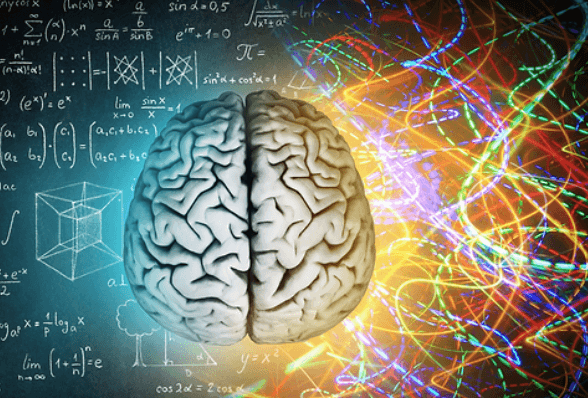Understanding Stroke: Prevention, Recovery, and Brain Health

Strokes are one of the leading causes of death and disability worldwide, and they can occur with little to no warning. However, understanding how strokes happen and what can be done to prevent them is crucial for maintaining long-term brain health. While there are different types of strokes, including ischemic and hemorrhagic strokes, the approach to stroke prevention and treatment should be comprehensive, addressing both lifestyle factors and medical care.
In this article, we’ll explore how strokes affect the brain, what you can do to lower your risk, and the key differences between ischemic vs hemorrhagic stroke treatment.
What Is a Stroke?
A stroke occurs when the blood supply to part of the brain is disrupted, causing brain cells to die. The brain requires a constant supply of oxygen-rich blood to function properly, and any interruption to this supply can lead to severe consequences. Strokes can result in long-term disabilities, including problems with movement, speech, and memory, depending on the area of the brain affected.
There are two main types of strokes: ischemic and hemorrhagic. Each type has different causes, but both require immediate medical attention to prevent further brain damage.
See also: Your Healthcare, Your Schedule: How Vosita Makes It Possible
Ischemic Strokes: The Most Common Type
Ischemic strokes occur when a blood clot blocks or narrows an artery leading to the brain. This clot prevents oxygen-rich blood from reaching brain cells, causing them to die. Ischemic strokes account for about 85% of all stroke cases, making them the most common type.
These strokes can happen due to blood clots that form in the arteries of the brain or travel from other parts of the body, such as the heart (often in cases of atrial fibrillation). Factors such as high blood pressure, smoking, and high cholesterol increase the risk of ischemic stroke.
Hemorrhagic Strokes: Less Common but Often More Severe
Hemorrhagic strokes occur when a blood vessel in the brain bursts, leading to bleeding (hemorrhage) in or around the brain. This bleeding increases pressure on the brain tissue, which can cause significant damage. Hemorrhagic strokes are often more severe than ischemic strokes and account for about 15% of stroke cases.
The most common causes of hemorrhagic strokes include high blood pressure, aneurysms (weakened blood vessels), and trauma. While less common than ischemic strokes, they tend to result in more extensive brain damage due to the direct impact of bleeding on brain tissue.
Stroke Prevention: How to Reduce Your Risk
Preventing a stroke involves managing risk factors that contribute to both ischemic and hemorrhagic strokes. Many of these risk factors are related to lifestyle choices and can be modified with proper care. Here’s how you can reduce your risk of stroke:
1. Control High Blood Pressure
High blood pressure is one of the most significant risk factors for both types of strokes. Over time, high blood pressure can damage the walls of arteries, making them more susceptible to blood clots (in ischemic strokes) or weakening them (leading to hemorrhagic strokes). Managing blood pressure through medication, diet, and exercise is critical to reducing stroke risk.
- Exercise regularly: Physical activity helps lower blood pressure and improve heart health.
- Eat a healthy diet: A diet rich in fruits, vegetables, whole grains, and lean proteins can help control blood pressure.
- Reduce salt intake: Limiting sodium in your diet can prevent high blood pressure.
2. Manage Cholesterol and Blood Sugar Levels
High cholesterol contributes to the formation of plaques in the arteries, which can lead to blockages and increase the risk of ischemic stroke. Additionally, individuals with diabetes are at higher risk of strokes because uncontrolled blood sugar can damage blood vessels and contribute to plaque buildup.
- Include heart-healthy fats in your diet: Omega-3 fatty acids from sources like fish, flaxseeds, and walnuts can help lower cholesterol levels.
- Monitor blood sugar: Keeping blood sugar levels under control with a balanced diet and medication (if necessary) can reduce stroke risk.
3. Stop Smoking and Limit Alcohol Consumption
Smoking damages the blood vessels, making strokes more likely, especially ischemic strokes. Quitting smoking is one of the most effective ways to reduce stroke risk. Similarly, excessive alcohol consumption raises blood pressure and increases the likelihood of both types of strokes.
- Quit smoking: Seek support through cessation programs, counseling, or medications.
- Limit alcohol: Keep alcohol consumption to moderate levels—no more than one drink per day for women and two drinks per day for men.
4. Stay Physically Active
Regular physical activity not only helps manage weight, blood pressure, and cholesterol, but it also improves overall cardiovascular health. Exercise strengthens the heart and improves circulation, reducing the likelihood of blood clots and promoting healthy arteries.
Even light activities like walking, swimming, or yoga can make a significant difference in reducing stroke risk.
5. Monitor Atrial Fibrillation
Atrial fibrillation (AFib) is an irregular heartbeat that increases the risk of blood clots forming in the heart, which can travel to the brain and cause an ischemic stroke. Individuals with AFib should work with their healthcare provider to manage the condition through medications and lifestyle changes.
Treatment for Strokes: Ischemic vs Hemorrhagic Stroke Treatment
When a stroke occurs, immediate treatment is crucial to minimizing brain damage and improving the chances of recovery. The treatment approach depends on the type of stroke—ischemic or hemorrhagic.
Ischemic Stroke Treatment
For ischemic strokes, the goal of treatment is to restore blood flow to the brain as quickly as possible. The most common treatments include:
- Clot-Busting Drugs (tPA): Tissue plasminogen activator (tPA) is a medication that dissolves blood clots. It must be administered within a few hours of the stroke’s onset to be effective.
- Mechanical Thrombectomy: In more severe cases, doctors may use a catheter to physically remove the clot from the artery, restoring blood flow to the brain.
- Anticoagulants and Antiplatelets: Blood-thinning medications may be prescribed to prevent future clots, especially for those with underlying conditions like atrial fibrillation or high cholesterol.
Hemorrhagic Stroke Treatment
For hemorrhagic strokes, the treatment approach focuses on stopping the bleeding and relieving pressure on the brain. Treatment options include:
- Surgical Intervention: In cases of a ruptured aneurysm or severe bleeding, surgery may be necessary to repair the blood vessel and prevent further hemorrhage.
- Medications: Drugs may be administered to control blood pressure, reduce brain swelling, or prevent further bleeding.
- Endovascular Procedures: In some cases, minimally invasive procedures are used to treat the hemorrhage or repair damaged blood vessels.
Regardless of the type of stroke, quick intervention is essential for improving outcomes and preventing permanent damage.
Recovery and Rehabilitation After a Stroke
Recovering from a stroke is a long process that involves physical, cognitive, and emotional rehabilitation. Each stroke survivor’s recovery journey is unique, depending on the severity of the stroke and the area of the brain affected.
1. Physical Therapy
Physical therapy is a critical component of stroke recovery, especially for patients who have lost mobility or strength. Exercises focus on improving balance, coordination, and muscle strength. Therapists may also work on gait training for patients who need to relearn how to walk.
2. Speech and Cognitive Therapy
Strokes often affect areas of the brain responsible for speech and cognition. Speech therapists can help patients regain communication skills, while cognitive therapy focuses on memory, attention, and problem-solving abilities.
3. Emotional Support and Counseling
Dealing with the emotional aftermath of a stroke is just as important as physical recovery. Many stroke survivors experience depression, anxiety, or frustration during their rehabilitation. Counseling and support groups can provide emotional support and coping strategies during this challenging time.
Conclusion: Prioritizing Brain Health for Stroke Prevention
While strokes can have devastating effects on brain health, the good news is that many risk factors can be managed through lifestyle changes. By controlling blood pressure, managing cholesterol and blood sugar levels, and making healthier choices, individuals can significantly reduce their risk of experiencing a stroke.
Understanding the differences between ischemic vs hemorrhagic stroke treatment is also important for those at risk or those caring for stroke survivors. With timely treatment and comprehensive rehabilitation, stroke survivors can improve their quality of life and regain independence. Ultimately, protecting brain health is key to preventing strokes and promoting long-term well-being.




